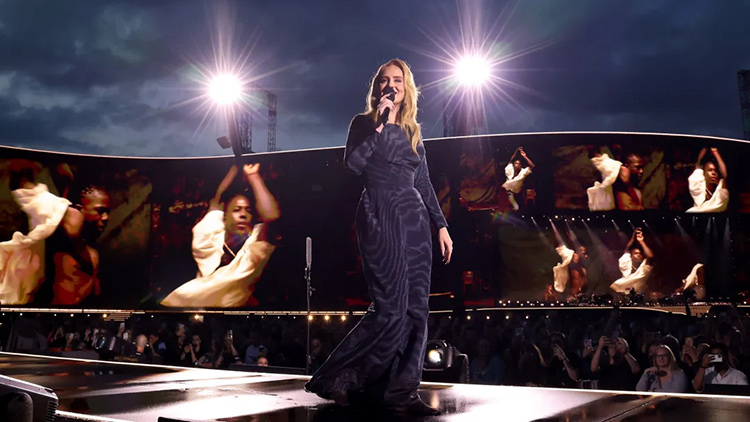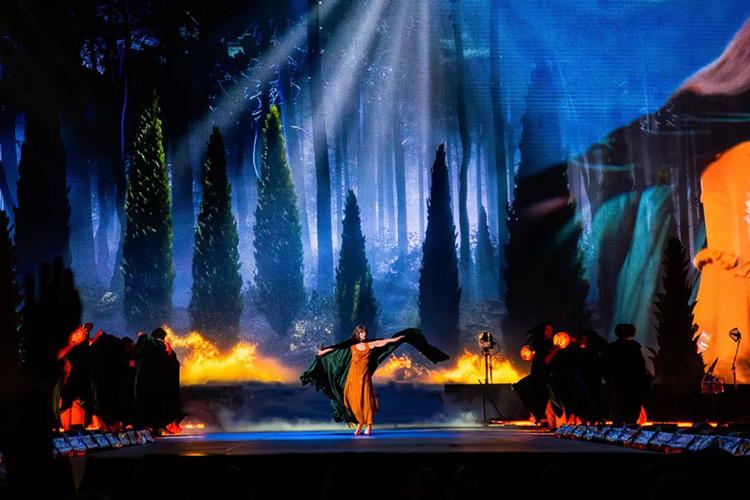+86 135 3053 5995
sales@mydled.comWe use our own and third-party cookies to ensure the proper functioning of the web portal and its complements, perform navigation analysis and show multimedia content. If you continue browsing, you accept the use of this technology. For more information please see our Cookies Policy. Learn more
In the realm of live music, the visual experience has become as crucial as the auditory one. LED screens have transformed concert stages into immersive environments, allowing artists to connect with their audiences in innovative ways. This article explores the application of LED screens in concerts, specifically examining Adele's performance in Munich and Taylor Swift's elaborate productions, highlighting their advantages and future trends.
During Adele's concert in Munich, the LED screen played a vital role in enhancing the emotional depth of her performance. The visuals complemented her powerful vocals, creating a synergy that captivated the audience. The large backdrop not only displayed stunning imagery but also featured close-up shots of the artist, allowing fans to feel a personal connection despite the distance.

In contrast, Taylor Swift’s concerts showcase a different level of creativity with LED screens. Her elaborate stage setups feature multiple screens, often positioned at various angles, providing a 360-degree view. These screens are used not only for displaying visuals that align with her songs but also for interactive elements that engage the audience. For instance, during her “Eras Tour,” the screens showcased iconic imagery from her discography, creating a nostalgic experience that resonated deeply with fans.

Enhanced Visual Impact: LED screens can display vibrant colors and high-resolution images, enriching the overall concert experience. This visual stimulation captivates audiences, making performances more memorable.
Dynamic Content: The ability to change visuals in real-time allows artists to adapt to the mood of the performance. Both Adele and Taylor Swift use this to their advantage, syncing visuals with musical crescendos or emotional peaks.
Accessibility: Large LED screens make it easier for audiences, especially those seated far from the stage, to see the performance up close. This inclusivity enhances the concert experience for everyone.
Interactive Elements: As seen in Taylor Swift's shows, LED screens can incorporate interactive elements, encouraging audience participation through real-time polls, social media integration, and even augmented reality experiences.
The future of concert LED screens looks promising, driven by technological advancements and evolving audience expectations:
Higher Resolution and Flexibility: As LED technology continues to improve, we can expect even higher resolutions, allowing for more intricate designs and animations. Flexible LED panels that can be shaped to fit various stage designs will also become more common.
Augmented and Virtual Reality Integration: The incorporation of AR and VR into live performances is on the rise. Imagine experiencing a concert where the visuals interact with the real world, offering a hybrid experience that blends live music with digital elements.
Sustainability: As the music industry becomes more environmentally conscious, LED screens will likely evolve to become more energy-efficient and made from sustainable materials, addressing both performance and ecological concerns.
Personalization: Future concerts may see personalized content tailored to specific audiences, such as dynamic visuals based on audience demographics or location, creating a unique experience for each show.
LED screens have revolutionized the way concerts are experienced, offering artists like Adele and Taylor Swift powerful tools to enhance their performances. As technology continues to evolve, the role of LED displays will only expand, pushing the boundaries of what live music can be. The combination of emotional resonance, audience engagement, and technological innovation makes LED screens an essential element of modern concert production.